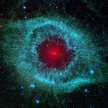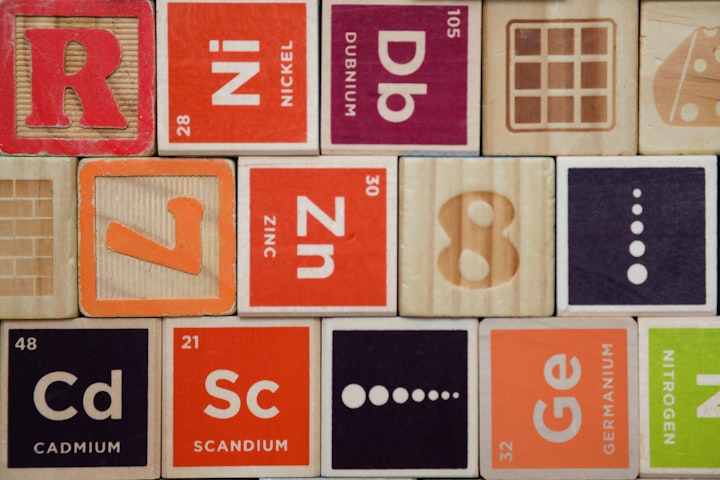Earth’s Epic Voyage Through Space
Most of us think little about what our planet is doing or where it is going. From our perspective, it looks stationary in space, but that is not the case.
British spelling.
Please scroll down to read the imperial measurement version of my story.
<>
Metric measurement version:
Our magical world.
Since the rise of our species, it is estimated that 117 billion of us have existed. At this time, nearly 8 billion humans are alive and speeding through space on a giant rock 12,742 kilometres wide.
Earth is the third planet from the Sun out of the eight orbiting planets.
Earth revolves around the Sun in the habitable zone, also known as the Goldilocks zone, a region of space where the temperature is ideal for water to exist in its three commonly recognised states: gas, liquid, and solid.
Without liquid water, there would be no life on our world.
The life-giving water on our planet would boil away if it were too close to the Sun, and be frozen solid if it were too far from the Sun.
Twenty-four hours, or our day, is the time it takes for the Earth to complete one revolution on its axis. To give an idea of how fast the Earth is spinning, imagine this:
If you were standing on the equator, the widest part of the Earth, you would be travelling at over 1,670 kilometres per hour, all due to that daily spin.
One year is the time the Earth takes to make a complete orbit around our local star, the Sun.
The distance between the Sun and the Earth is almost 150 million kilometres. To achieve that yearly journey around the Sun, our planet is speeding through space at 107,000 kilometres per hour.
Since its early beginning, our planet has circled the Sun over 4.5 billion times. I feel privileged to have shared that journey 70 times, but it makes you realise how short our lives are.
We need to make the most of our precious time here and enjoy our ride on spaceship Earth.
Our planet is part of the Solar System, which is in orbit around the centre of our galaxy, the Milky Way. That epic journey travelling at 790,000 kilometres per hour is called a galactic or cosmic year and takes roughly 225 million years to complete.
Hence, one could argue that the Earth is 20 cosmic years old, sounds considerably younger than its actual age of 4.5 billion years
One cosmic year ago, or the last time the Solar System was in this position in its path around the centre of our galaxy, dinosaurs were beginning to colonise the Earth, and it would be a very long time before we humans arrived on the scene!
To top it off, our galaxy with us onboard is travelling through space at roughly 2.1 million kilometres per hour, and we don't even notice it.
That speed is relative to the cosmic background radiation.

Image by Claudio_Scott from Pixabay.
We go to bed, shut our eyes, and fall asleep.
The next time you open your eyes in the morning, think of this: in an average sleep, you will have travelled an incredible distance of 15 million kilometres through space.
<><><>
Imperial measurement version.
Our magical world.
Since the rise of our species, it is estimated that 117 billion of us have existed. At this time, nearly 8 billion humans are alive and speeding through space on a giant rock 7,918 miles wide.
Earth is the third planet from the Sun out of the eight orbiting planets.
Earth revolves around the Sun in the habitable zone, also known as the Goldilocks zone, a region of space where the temperature is ideal for water to exist in its three commonly recognised states: gas, liquid, and solid.
Without liquid water, there would be no life on our world.
The life-giving water on our planet would boil away if it were too close to the Sun, and be frozen solid if it were too far from the Sun.
Twenty-four hours, or our day, is the time it takes for the Earth to complete one revolution on its axis. To give an idea of how fast the Earth is spinning, imagine this:
If you were standing on the equator, the widest part of the Earth, you would be travelling at over 1,037 miles per hour, all due to that daily spin.
One year is the time the Earth takes to make a complete orbit around our local star, the Sun.
The distance between the Sun and the Earth is just over 93 million miles. To achieve that yearly journey around the Sun, our planet is speeding through space at over 66,000 miles per hour.
Since its early beginning, our planet has circled the Sun over 4.5 billion times. I feel privileged to have shared that journey 70 times, but it makes you realise how short our lives are.
We need to make the most of our precious time here and enjoy our ride on spaceship Earth.
Our planet is part of the Solar System, which is in orbit around the centre of our galaxy, the Milky Way. That epic journey travelling at 490,000 miles per hour is called a galactic or cosmic year and takes roughly 225 million years to complete.
Hence, one could argue that the Earth is 20 cosmic years old, sounds considerably younger than its actual age of 4.5 billion years
One cosmic year ago, or the last time the Solar System was in this position in its path around the centre of our galaxy, dinosaurs were beginning to colonise the Earth, and it would be a very long time before we humans arrived on the scene!
To top it off, our galaxy with us onboard is travelling through space at roughly 1.3 million miles per hour, and we don't even notice it.
That speed is relative to the cosmic background radiation.

Image by Claudio_Scott from Pixabay.
We go to bed, shut our eyes, and fall asleep.
The next time you open your eyes in the morning, think of this: in an average sleep, you will have travelled an incredible distance of 9.3 million miles through space.
The end.
<><><>
You may find my easy-to-understand stories about the universe and life interesting and educational.
Subscribe to me for free, and you will see my latest stories. Enjoy.
About the Creator
Unravelling the Universe
We can only imagine what our early ancestors thought as they gazed up at the night sky—were they curious about what the heavens had to hide?
Reader insights
Outstanding
Excellent work. Looking forward to reading more!
Top insights
Easy to read and follow
Well-structured & engaging content
Expert insights and opinions
Arguments were carefully researched and presented
Eye opening
Niche topic & fresh perspectives
Heartfelt and relatable
The story invoked strong personal emotions
On-point and relevant
Writing reflected the title & theme








Comments (4)
Congratulations on your top story.
This is a STELLAR piece! I find myself looking out of a window at work, up at the sky, and pondering how a scene that looks so still is actually hurtling through space with unbelievable speed. This is a real perspective reset- so intelligently communicated. It was thoughtful of you to include both systems of measurement, too! :) This is a very well-earned Top Story, and deserves a whole lot more attention in my mind!
Super interesting piece here!
Very interesting, I like the final beat of the ending- in all the science, the sheer magic and majesty of the cosmos. Also, I couldn't help but read this in the narrator voice from the 2005 movie release of "Hitchhiker's Guide to the Galaxy"